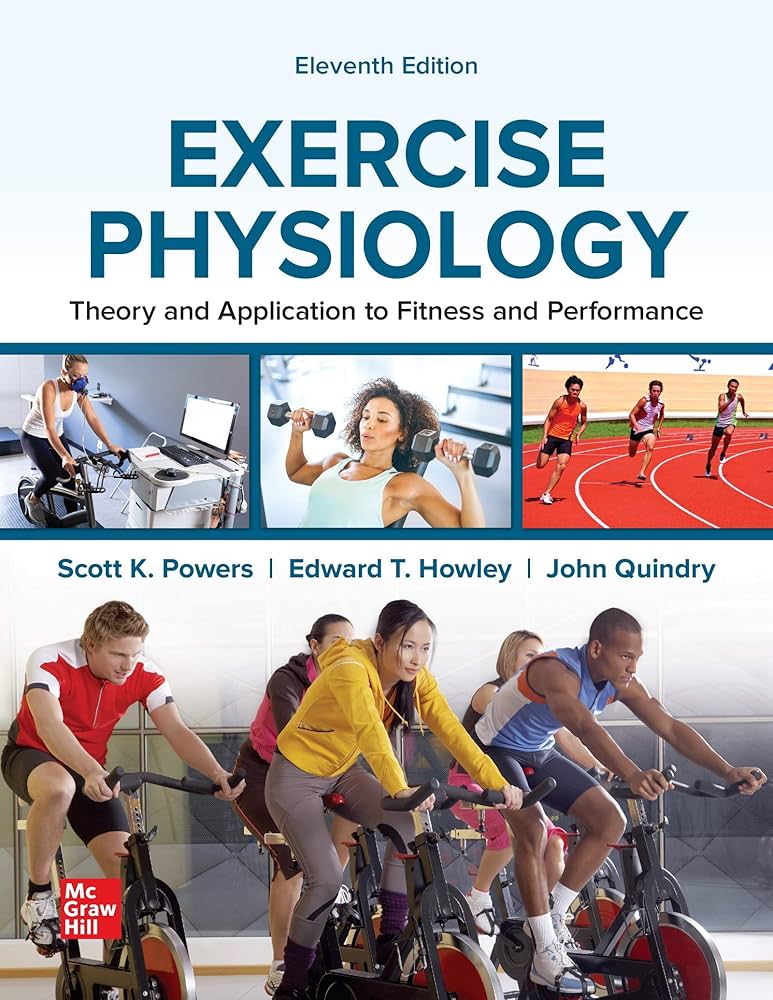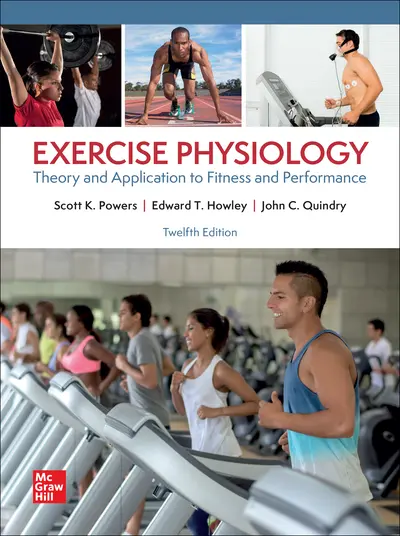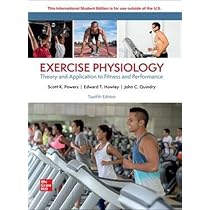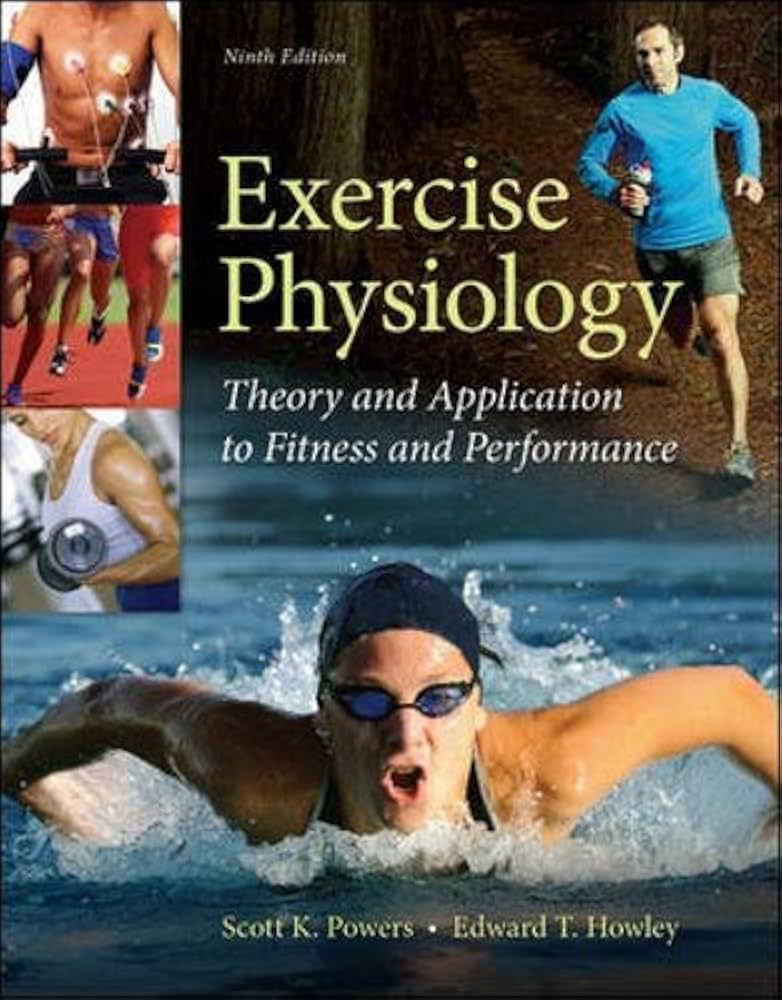What do you think happens to your body when you push it to its limits during a workout? Understanding the science behind your body’s reactions to exercise can be both fascinating and empowering. Exercise physiology combines elements of biology, medicine, and athletic training. In this article, you’ll learn about the theory behind exercise physiology and how you can apply this knowledge to enhance your fitness and performance.

This image is property of Amazon.com.
Understanding Exercise Physiology
Exercise physiology focuses on how the body responds and adapts to physical activity. It looks at various systems within your body—like muscular, cardiovascular, and respiratory—and how they work together during exercise. When you engage in physical activity, your body undergoes several physiological changes to meet the increased demands.
Key Components of Exercise Physiology
There are several key concepts within exercise physiology that are essential for understanding how your body functions during workouts:
- Energy Systems: Your body relies on different energy systems to fuel activity. The primary systems include the phosphagen system, glycolysis, and oxidative phosphorylation.
- Muscle Fiber Types: There are primarily two types of muscle fibers: slow-twitch (Type I) and fast-twitch (Type II). Each type plays a unique role depending on whether you’re engaged in endurance or high-intensity activities.
- Cardiovascular Response: Your heart rate, blood flow, and oxygen consumption all increase during exercise to supply your working muscles with the energy they need.
- Thermoregulation: Your body maintains its internal temperature through sweating and increased blood flow to the skin as you exercise.
Understanding these components can help you make informed decisions about your fitness regimen.
Energy Systems: Fueling Your Workouts
Your body’s ability to produce energy is crucial for fitness and performance. Let’s break down the three main energy systems and how they function.
Phosphagen System
This system is your body’s immediate source of energy, primarily used during short bursts of high-intensity activities, such as sprinting or heavy lifting.
| Feature | Description |
|---|---|
| Duration | 0-10 seconds |
| Primary Fuel Source | Creatine phosphate |
| Example Activities | Sprinting, weight lifting |
The phosphagen system provides energy rapidly but cannot be sustained for long periods. After this system is depleted, your body shifts to the next energy system.
Glycolytic System
As you continue exercising beyond 10 seconds, your body taps into the glycolytic system, which breaks down carbohydrates to generate energy.
| Feature | Description |
|---|---|
| Duration | 10 seconds to 2 minutes |
| Primary Fuel Source | Glucose (from carbohydrates) |
| Example Activities | 400-meter dash, circuit training |
Lactic acid buildup can occur with this system, leading to fatigue and a burning sensation in your muscles.
Oxidative System
This is your body’s primary energy source during prolonged, moderate-intensity activities.
| Feature | Description |
|---|---|
| Duration | Over 2 minutes |
| Primary Fuel Source | Fats and carbohydrates |
| Example Activities | Running, swimming, cycling |
The oxidative system produces energy more slowly but can be sustained for much longer, making it ideal for endurance training.
Understanding these energy systems enables you to tailor your workouts according to your fitness goals.

This image is property of Amazon.com.
Muscle Fiber Types: The Engine of Performance
Your muscles contain different types of fibers that contribute to your overall performance. Familiarizing yourself with muscle fiber types can help you determine your strengths and weaknesses.
Slow-Twitch (Type I) Fibers
Slow-twitch fibers are more endurance-oriented. They utilize oxygen effectively and are resistant to fatigue.
| Feature | Description |
|---|---|
| Function | Endurance activities |
| Characteristics | High aerobic capacity, slow contraction speed |
| Example Activities | Long-distance running, cycling |
Individuals with a higher proportion of slow-twitch fibers often excel in endurance sports.
Fast-Twitch (Type II) Fibers
Fast-twitch fibers, on the other hand, are designed for short bursts of speed and power.
| Feature | Description |
|---|---|
| Function | Sprinting, jumping |
| Characteristics | Low aerobic capacity, fast contraction speed |
| Example Activities | Sprinting, weightlifting |
If you possess more fast-twitch fibers, you likely excel in short, high-intensity workouts. Understanding your fiber composition can help target your training more effectively.
Cardiovascular Response: Heart in Action
When you exercise, your cardiovascular system kicks into high gear to deliver oxygen and nutrients to your muscles.
Heart Rate
Your heart rate increases significantly during physical activity. The relationship between exercise intensity and heart rate is linear—higher intensity leads to a higher heart rate.
| Intensity | Heart Rate Response |
|---|---|
| Low | 50-60% of maximum heart rate |
| Moderate | 60-75% of maximum heart rate |
| High | 75-90% of maximum heart rate |
Monitoring your heart rate can help you maintain the desired intensity during your workouts.
Blood Flow and Oxygen Transport
During exercise, blood flow to your working muscles increases while blood flow to inactive areas decreases. Your body prioritizes supplying oxygen to where it’s needed most.
Additionally, your respiratory system plays a vital role. Your breathing rate increases to provide more oxygen and rid your body of carbon dioxide.

This image is property of www.mheducation.com.
Thermoregulation: Staying Cool
Maintaining optimal body temperature during exercise is essential for performance. Your body employs a range of cooling methods to help manage heat.
Sweating
As your body temperature rises, sweating becomes your main defense against overheating.
- Evaporative Cooling: Sweat evaporates from your skin, cooling you off in the process.
- Hydration: Staying well-hydrated is crucial. Dehydration can impair your body’s ability to sweat effectively, leading to heat exhaustion or heat stroke.
Knowing how to manage your body temperature can enhance endurance, especially during hot weather.
Adaptations to Exercise: Getting Stronger
The most exciting aspect of exercise physiology is the adaptations that occur as you continue your training. Your body is remarkably resilient and capable of change.
Muscular Adaptations
As you engage in resistance training, your muscles undergo hypertrophy, which means they grow in size. Over time, you’ll also develop increased strength and muscular endurance.
- Neural Adaptations: Initially, some of your strength gains come from improvements in your nervous system’s ability to recruit muscle fibers effectively.
- Metabolic Changes: Your muscles become more efficient in using oxygen to produce energy, enhancing performance.
Cardiovascular Adaptations
With consistent aerobic training, you can expect several beneficial changes to your cardiovascular system.
- Increased Stroke Volume: Your heart becomes more efficient, pumping more blood with each heartbeat.
- Enhanced Capillary Density: More capillaries in your muscles improve oxygen delivery and waste removal.
Incorporating progressive overload in your training can help you maximize these adaptations.

This image is property of Amazon.com.
Application to Fitness: Making It Work for You
Understanding exercise physiology is not just for athletes; it’s a powerful tool for anyone looking to improve their fitness.
Setting SMART Goals
Applying the principles of exercise physiology can start with setting SMART goals—Specific, Measurable, Achievable, Relevant, and Time-bound.
For instance:
- Specific: “I want to run a 5K.”
- Measurable: “I will track my run times each week.”
- Achievable: “I will follow a 10-week training plan.”
- Relevant: “Running supports my overall fitness goals.”
- Time-bound: “I aim to complete the 5K in three months.”
Designing Your Workout Plan
When constructing your training program, consider the types of exercises and intensity levels. Incorporate a balance of:
- Aerobic Training: To enhance cardiovascular fitness, integrate activities like running, cycling, or swimming.
- Strength Training: To develop muscle mass and strength, include exercises such as weight lifting or bodyweight workouts.
- Flexibility and Mobility Work: Activities like yoga or dynamic stretching can improve your range of motion and help prevent injuries.
Monitoring Progress
Track your progress through various metrics. You could look at improvements in strength, endurance, or even heart rate recovery times. Regular assessments will keep you motivated and on the right track.
| Metric | How to Measure |
|---|---|
| Strength (e.g., squats, deadlifts) | Record maximum lift at regular intervals |
| Endurance (e.g., running) | Time your 1-mile or 5K run and compare month to month |
| Flexibility (e.g., reach tests) | Measure your flexibility through specific stretches |
Enhancing Performance: Take It Up a Notch
For those of you aiming for peak performance, consider delving deeper into specific training techniques.
HIIT (High-Intensity Interval Training)
HIIT alternates between short bursts of intense effort and rest. This type of training can dramatically improve both aerobic and anaerobic fitness.
Periodization
Dividing your training into specific phases (macro, meso, microcycles) can help optimize performance. Different phases focus on various aspects like strength, endurance, or recovery to prevent burnout.
Nutrition
The right nutrition plays a critical role in both fitness and performance. Pay attention to:
- Macronutrients: Ensure you’re fueling your body with the appropriate balance of carbohydrates, proteins, and fats.
- Hydration: Staying hydrated is key to maintaining energy levels and enhancing recovery.

This image is property of Amazon.com.
Conclusion: Embrace the Science
Gaining a deeper understanding of exercise physiology can truly empower your fitness journey. Recognize that every workout impacts your body in unique ways and applies knowledge to maximize your progress. By embracing the principles shared in this article, you’ll not only improve your physical capabilities but also foster a lasting dedication to your health and wellness. Keep your curiosity alive, and remember that your body is capable of amazing things!